Heat Transfer Performance of an Axially Rotating Heat Pipe for Cooling of Grinding
Abstract
1. Introduction
2. Simulation Details
2.1. Simulation Model and Boundary Conditions
2.2. Solution Methods
3. Results and Discussion
3.1. Effect of Input Heat Flux
3.2. Effect of Filling Ratio
3.3. Effect of Rotational Speed
4. Validation
4.1. Experimental Conditions
4.2. Temperature Distribution in the RHP
4.3. Temperature in the Grinding Contact Zone
5. Conclusions
- (1)
- The appropriate heat flux for the new tool ranges from 2000 to 100,000 . An ideal filling ratio of about 50% was determined with a heat transfer coefficient of 822.6 . The heat transfer coefficient decreased with the rise of the rotational speed because nucleate boiling was gradually replaced by convection heat transfer.
- (2)
- A consistent temperature distribution and start-up process including conduction, convection and boiling were found in both simulation and experiment results. The start-up time for the RHP-GW with filling ratio of 50%, a rotational speed of 5000 rpm and a cutting depth of 0.1 mm was about 60 s.
- (3)
- The grinding temperature in the contact zone was controlled below 100 °C and the microstructure of the workpiece beneath the ground layer was found to be consistent with the bulk material.
Author Contributions
Funding
Acknowledgments
Conflicts of Interest
Nomenclature
| h | heat transfer coefficient: W/(m2∙K) |
| LH | latent heat of working fluid, KJ/kg |
| P | local pressure, Pa |
| q″ | heat flux, W/m2 |
| S | source term |
| T | temperature, °C |
| ΔT | temperature difference |
| Greek | |
| ρ | density, kg/m3 |
| α | volume fraction of liquid phase |
| σ | interfacial surface tension, N/S |
| Subscripts | |
| in | input |
| co | outside the condenser section |
| eo | outside the evaporator section |
| EC | heat transfer of condensation |
| EE | heat transfer of evaporation |
| L | liquid phase |
| m | momentum |
| mix | mixture of liquid and vapor |
| ML | mass transfer of liquid |
| MV | mass transfer of vapor |
| sat | saturate |
| V | vapor phase |
References
- Rajesh, B.; Amit, R.D.; Arun, K.T. Machining performance enhancement of powder mixed electric discharge machining using Green dielectric fluid. J. Braz. Soc. Mech. Sci. 2020, 42, 512. [Google Scholar]
- Ma, C.; Duan, Y.; Yu, B.; Sun, J.; Tu, Q. The comprehensive effect of surface texture and roughness under hydrodynamic and mixed lubrication conditions. Proc. Inst. Mech. Eng. Part J J. Eng. Tribol. 2017, 231, 1307–1319. [Google Scholar] [CrossRef]
- Barczak, L.M.; Batako, A.D.L.; Morgan, M.N. A study of plane surface grinding under minimum quantity lubrication (MQL) conditions. Int. J. Mach. Tools Manuf. 2010, 50, 977–985. [Google Scholar] [CrossRef]
- Wei, W.; Li, Y.; Xue, T.; Tao, S.; Mei, C.; Zhou, W.; Wang, J.; Wang, T. The Research Progress of Machining Mechanisms in Milling Wood-based Materials. Bioresources 2018, 13, 2139–2149. [Google Scholar] [CrossRef]
- Gugulothu, S.; Pasam, V.K. Testing and Performance Evaluation of Vegetable-Oil-Based Hybrid Nano Cutting Fluids. J. Test. Eval. 2020, 48, 3839–3854. [Google Scholar] [CrossRef]
- Rabiei, F.; Rahimi, A.R.; Hadad, M.J. Performance improvement of eco-friendly MQL technique by using hybrid nanofluid and ultrasonic-assisted grinding. Int. J. Adv. Manuf. Tech. 2017, 93, 1001–1015. [Google Scholar] [CrossRef]
- Sen, B.; Gupta, M.K.; Mia, M. Wear behavior of TiAlN coated solid carbide end-mill under alumina enriched minimum quantity palm oil-based lubricating condition. Tribol. Int. 2020, 148, 106310. [Google Scholar] [CrossRef]
- Ponnappan, R.; Leland, J.E. Rotating heat pipe for high speed motor/generator cooling. SAE Trans. 1998, 107, 257–262. [Google Scholar]
- Daniels, T.C.; Williams, R.J. Experimental temperature distribution and heat load characteristics of rotating heat pipes. Int. J. Heat Mass Transf. 1978, 21, 193–201. [Google Scholar] [CrossRef]
- Song, F.; Ewing, D.; Ching, C.Y. Fluid flow and heat transfer model for high-speed rotating heat pipes. Int. J. Heat Mass Transf. 2003, 46, 4393–4401. [Google Scholar] [CrossRef]
- Judd, R.L.; Aftab, K.; Elbestawi, M.A. An investigation of the use of heat pipes for machine tool spindle bearing cooling. Int. J. Mach. Tools Manuf. 1994, 34, 1031–1043. [Google Scholar] [CrossRef]
- Jen, T.C.; Gutierrez, G.; Eapen, S. Investigation of heat pipe cooling in drilling applications-Part(I): Preliminary numerical analysis and verification. Int. J. Mach. Tools Manuf. 2002, 42, 643–652. [Google Scholar] [CrossRef]
- Liu, D.; Ling, X.; Peng, H.; Li, J.; Duan, L. Experimental and numerical analysis on heat transfer performance of slug flow in rectangular microchannel. Int. J. Heat Mass Transf. 2020, 147, 118963. [Google Scholar] [CrossRef]
- Asmaie, L.; Haghshenasfard, M.; Mehrabani-Zeirabad, A.; Esfahany, M.N. Thermal performance analysis of nanofluids in a thermosyphonheat pipe using CFD modeling. Heat Mass Transf. 2013, 48, 66–78. [Google Scholar]
- Kenjeres, S.; Hanjalic, K. Convective rolls and heat transfer in finite-length Rayleigh-Benard convection: A two-dimensional numerical study. Phys. Rev. E 2000, 62, 7987–7998. [Google Scholar] [CrossRef]
- Kafeel, K.; Turan, A. Axi-symmetric simulation of a two-phase vertical thermosyphon using eulerian two-fluid methodology. Heat Mass Trans. 2013, 49, 1089–1099. [Google Scholar] [CrossRef]
- Chen, J.J.; Fu, Y.C.; Gu, Z.B.; Shen, H.F.; He, Q.S. Study on heat transfer of a rotating heat pipe cooling system in dry abrasive-milling. Appl. Therm. Eng. 2017, 115, 736–743. [Google Scholar] [CrossRef]
- Fadhl, B.; Wrobel, L.C.; Jouhara, H. Numerical Modeling of the Temperature Distribution in a Two-phase Closed Thermosyphon. Appl. Therm. Eng. 2013, 60, 122–131. [Google Scholar] [CrossRef]
- De Schepper, S.C.K.; Heynderickx, G.J.; Marin, G.B. Modeling the evaporation of a hydrocarbon feedstock in the convection section of a steam cracker. Comput. Chem. Eng. 2009, 33, 122–132. [Google Scholar] [CrossRef]
- Poulikakos, D.; Bejan, A. Unsteady natural convection in a porous layer. Phys. Fluids 1983, 26, 1183–1191. [Google Scholar] [CrossRef]
- Neshat, E.; Hossainpour, S.; Bahiraee, F. Experimental and numerical study on unsteady natural convection heat transfer in helically coiled tube heat exchangers. Heat Mass Transf. 2014, 50, 877–885. [Google Scholar] [CrossRef]
- Vasiliev, L.L.; Khrolenok, V.V. Centrifugal coaxial heat pipes. In Proceedings of the 2nd International Heat Pipe Conference, Bologna, Italy, 31 March–2 April 1976; pp. 293–302. [Google Scholar]
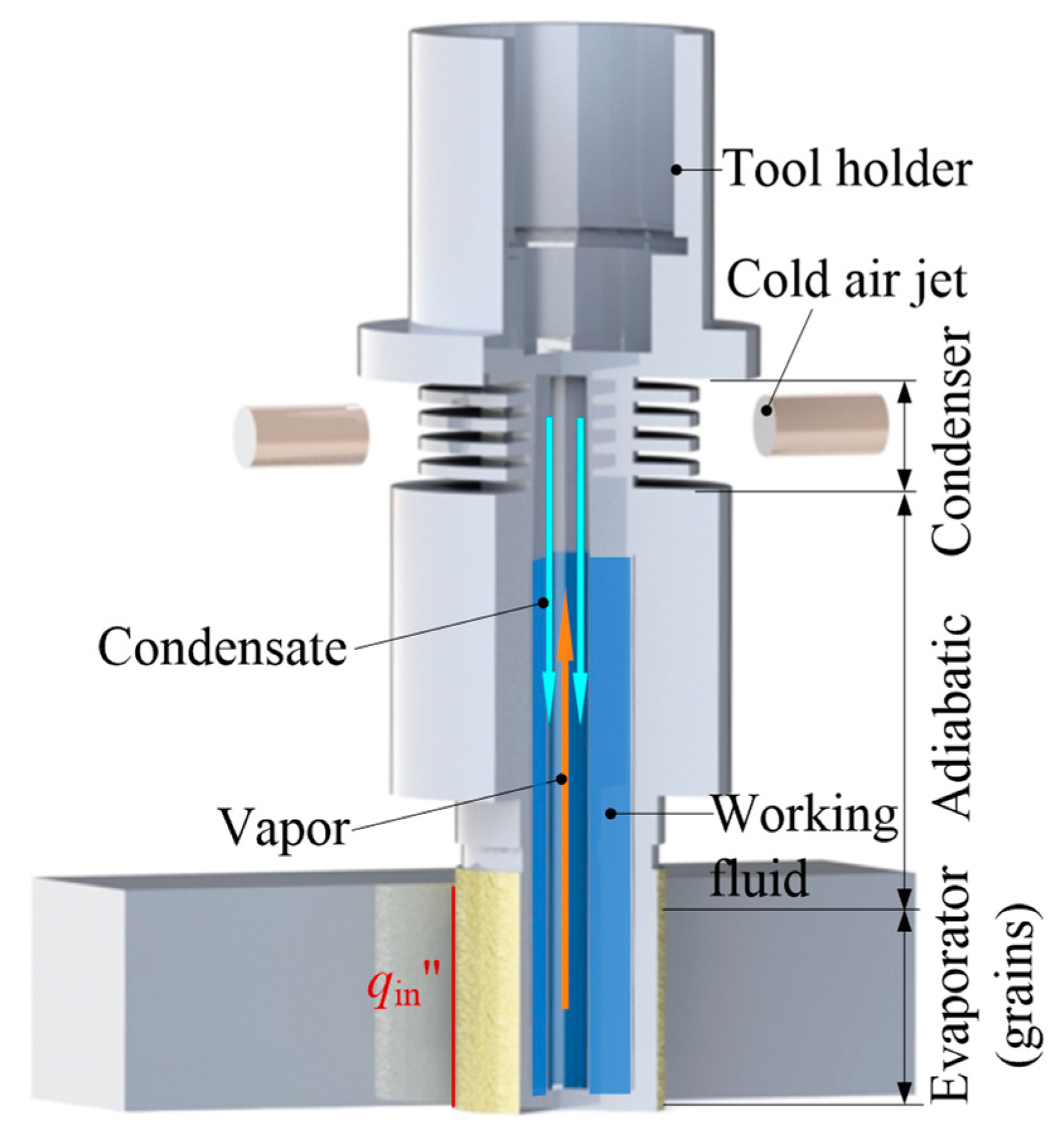
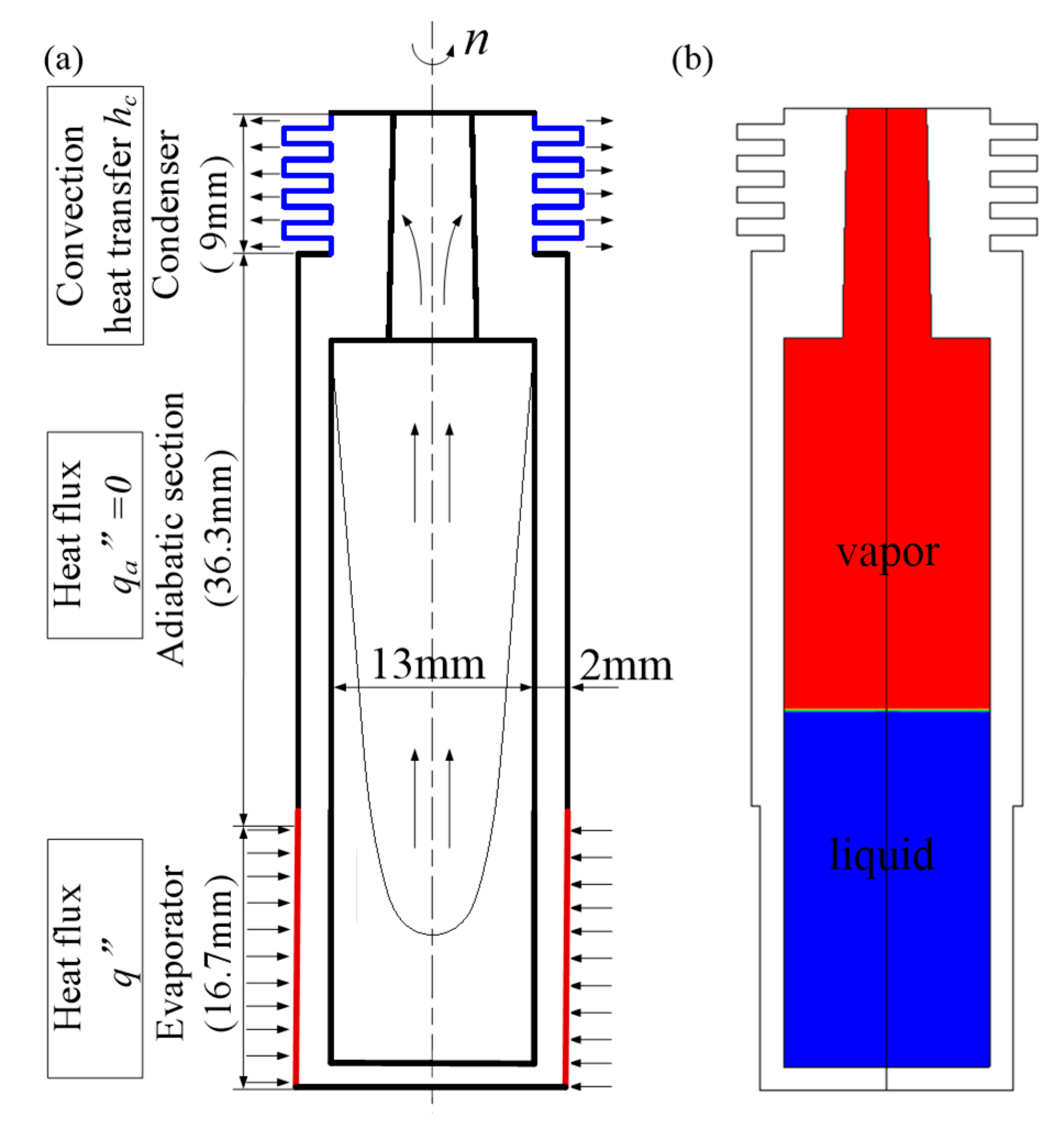
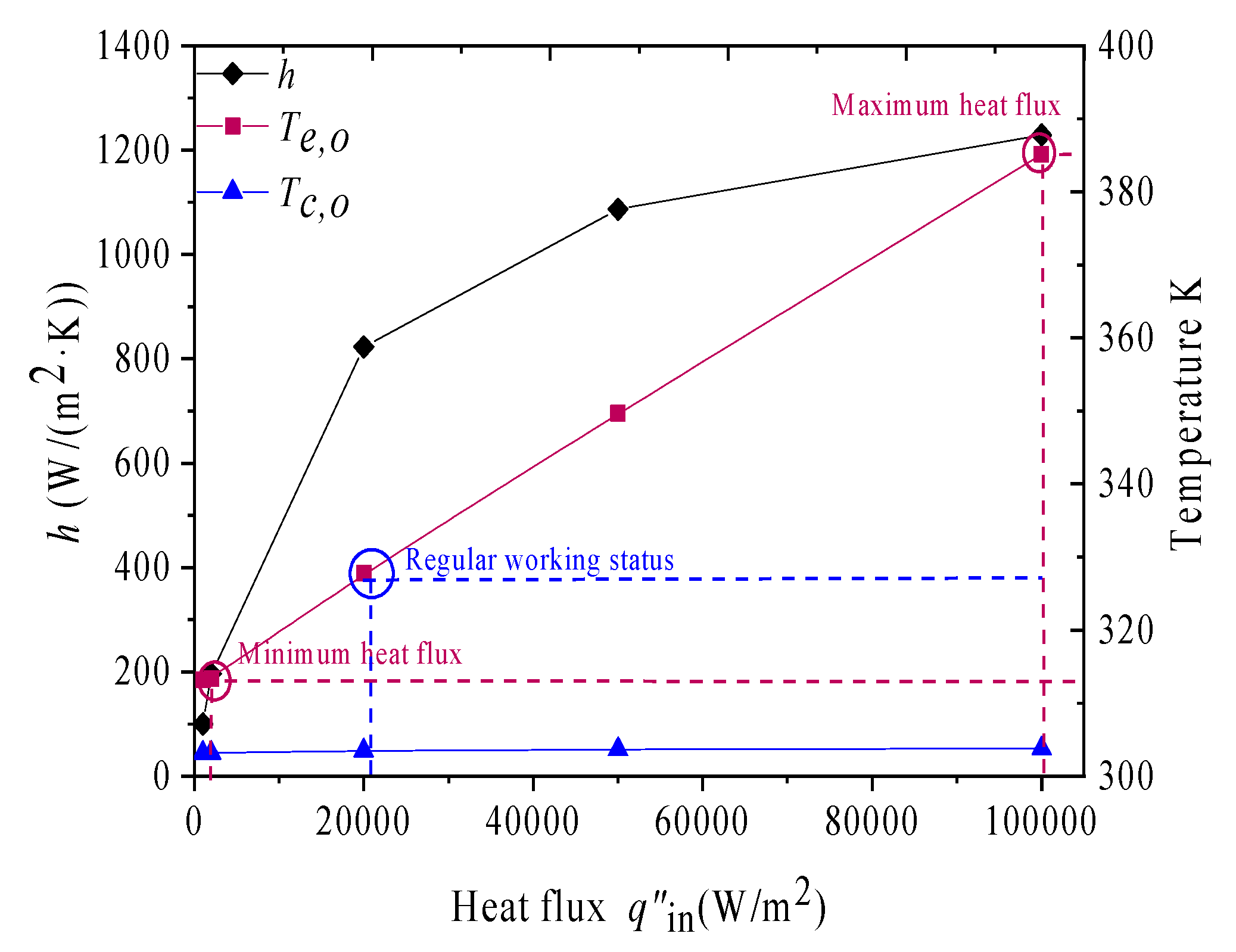
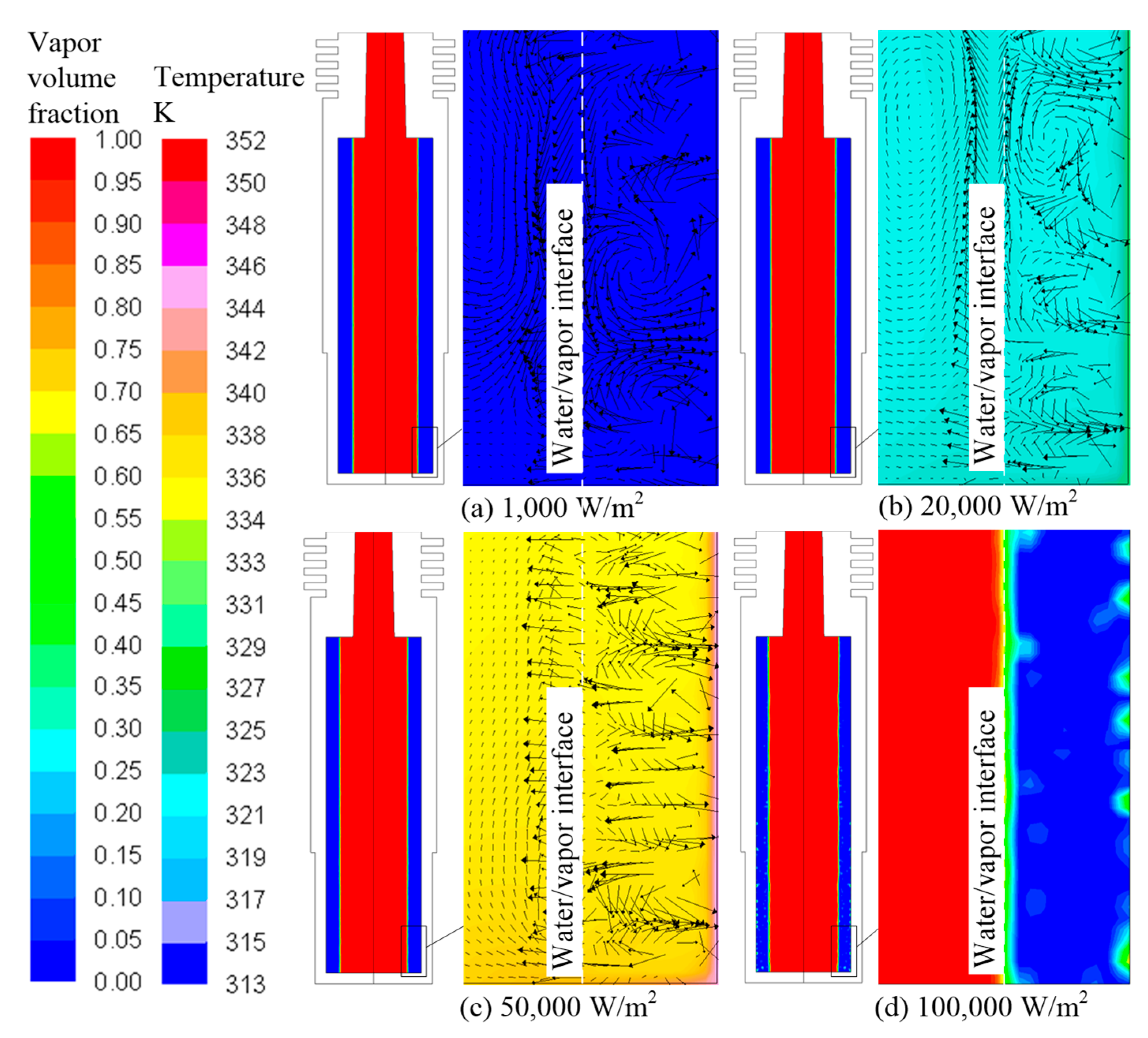
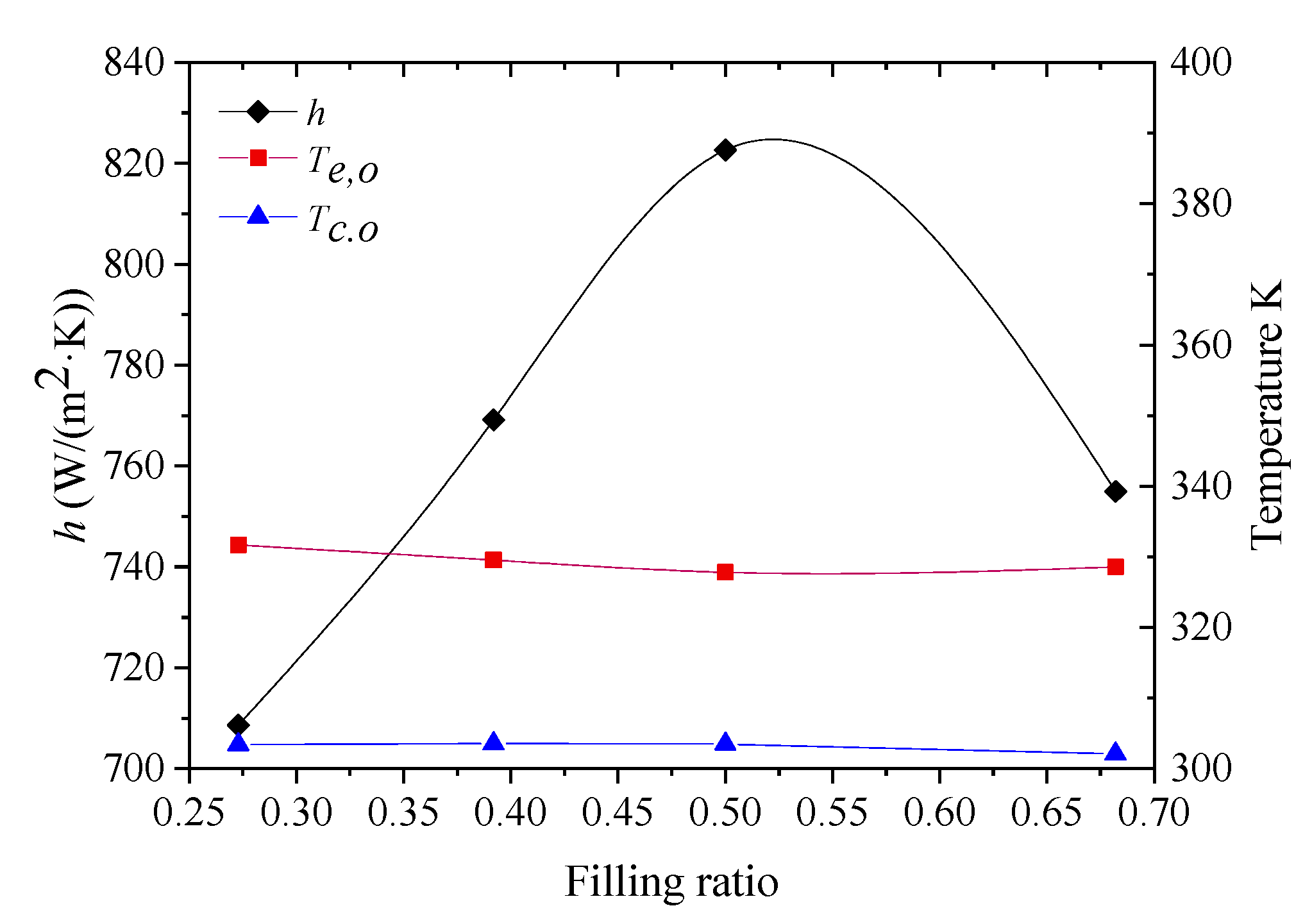



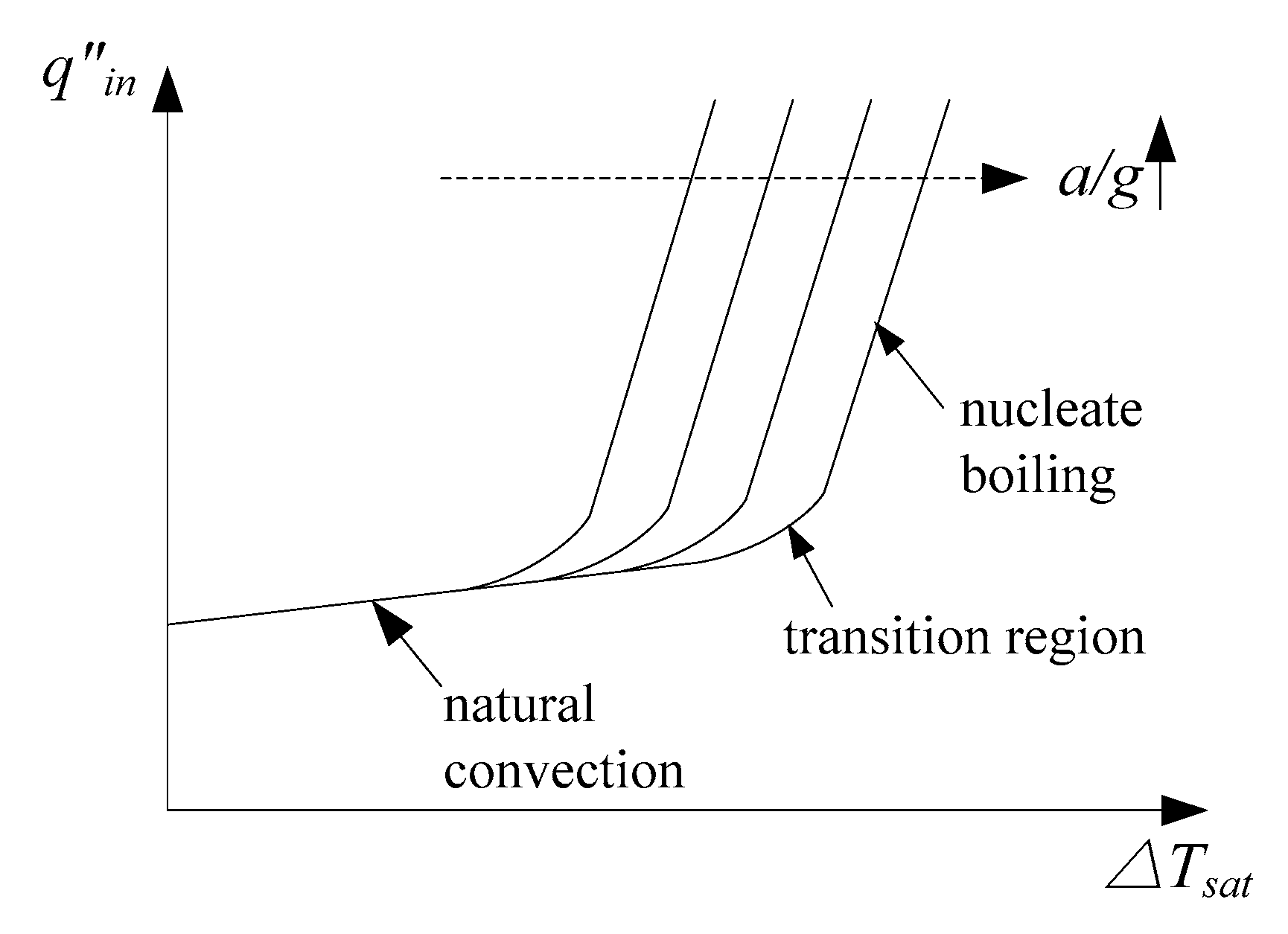

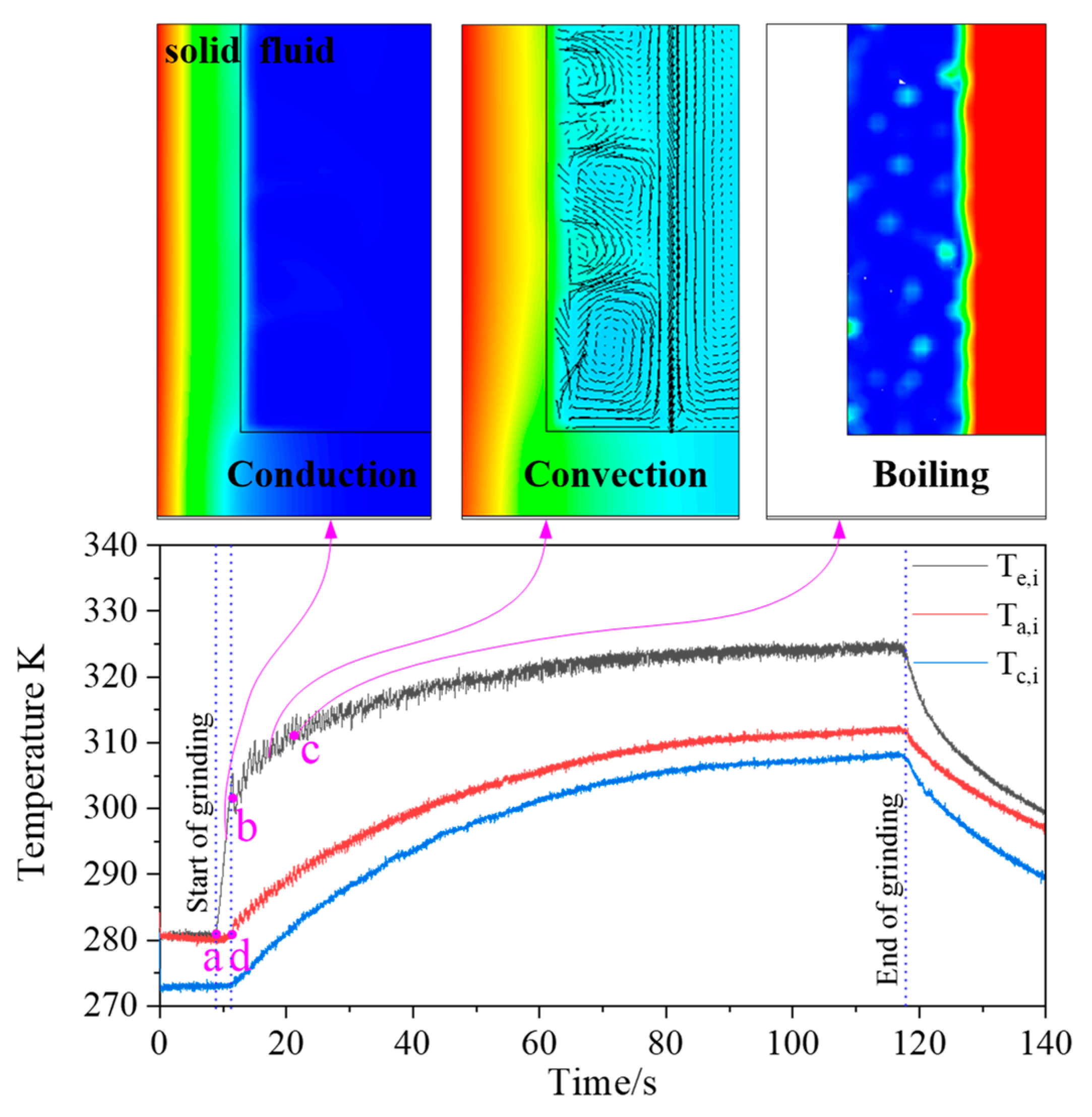

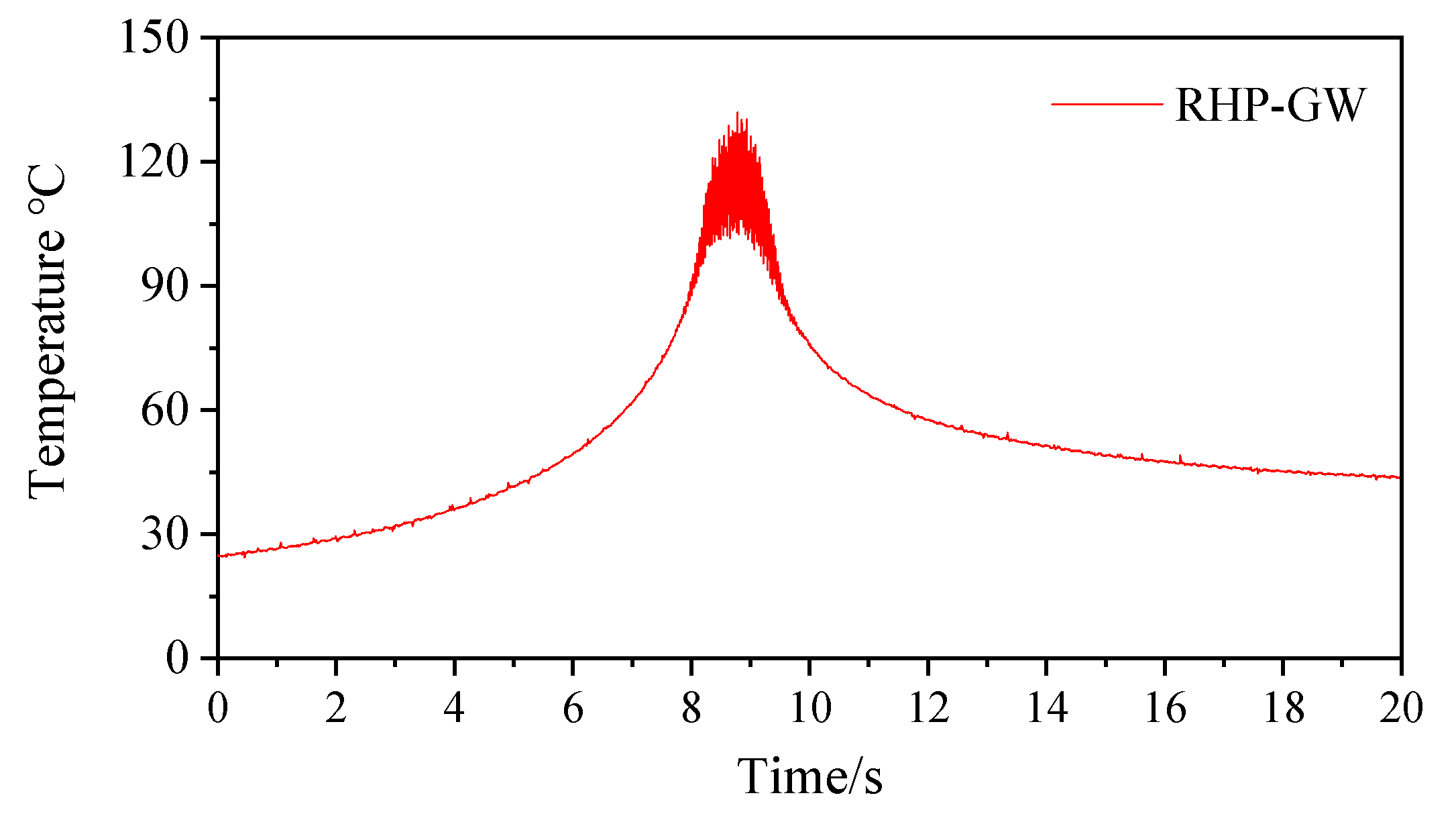

| Phase Change Process | Source Terms |
|---|---|
| Evaporation | |
| Condensation | |
Publisher’s Note: MDPI stays neutral with regard to jurisdictional claims in published maps and institutional affiliations. |
© 2020 by the authors. Licensee MDPI, Basel, Switzerland. This article is an open access article distributed under the terms and conditions of the Creative Commons Attribution (CC BY) license (http://creativecommons.org/licenses/by/4.0/).
Share and Cite
Chen, J.; Jiang, H.; Fu, Y.; Qian, N. Heat Transfer Performance of an Axially Rotating Heat Pipe for Cooling of Grinding. Energies 2020, 13, 5745. https://doi.org/10.3390/en13215745
Chen J, Jiang H, Fu Y, Qian N. Heat Transfer Performance of an Axially Rotating Heat Pipe for Cooling of Grinding. Energies. 2020; 13(21):5745. https://doi.org/10.3390/en13215745
Chicago/Turabian StyleChen, Jiajia, Huafei Jiang, Yucan Fu, and Ning Qian. 2020. "Heat Transfer Performance of an Axially Rotating Heat Pipe for Cooling of Grinding" Energies 13, no. 21: 5745. https://doi.org/10.3390/en13215745
APA StyleChen, J., Jiang, H., Fu, Y., & Qian, N. (2020). Heat Transfer Performance of an Axially Rotating Heat Pipe for Cooling of Grinding. Energies, 13(21), 5745. https://doi.org/10.3390/en13215745





